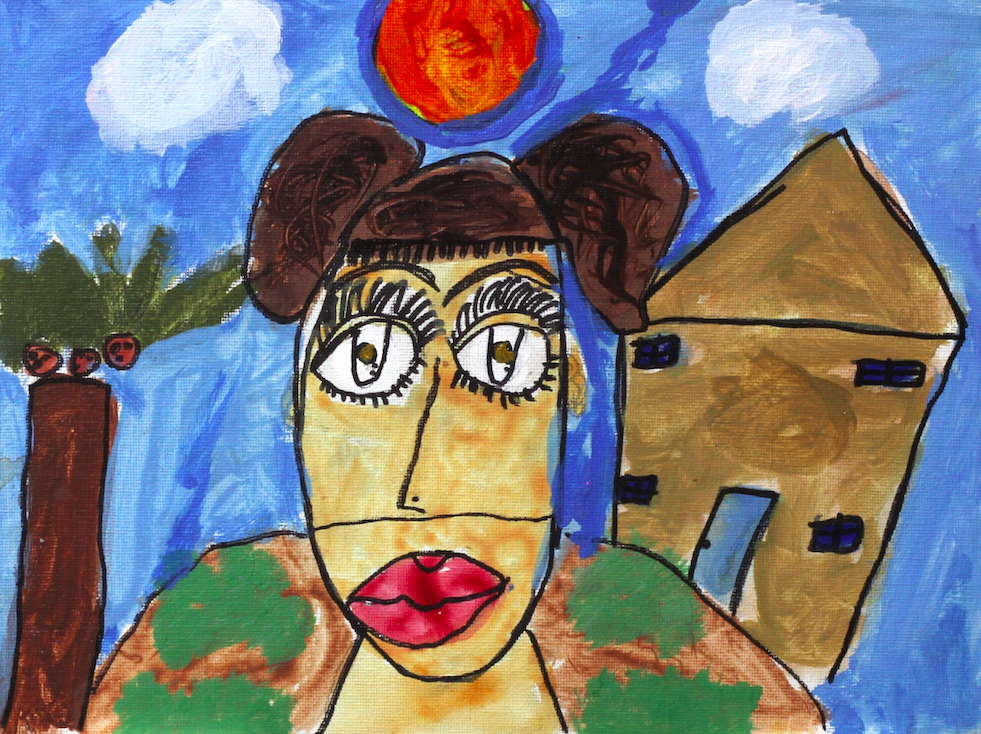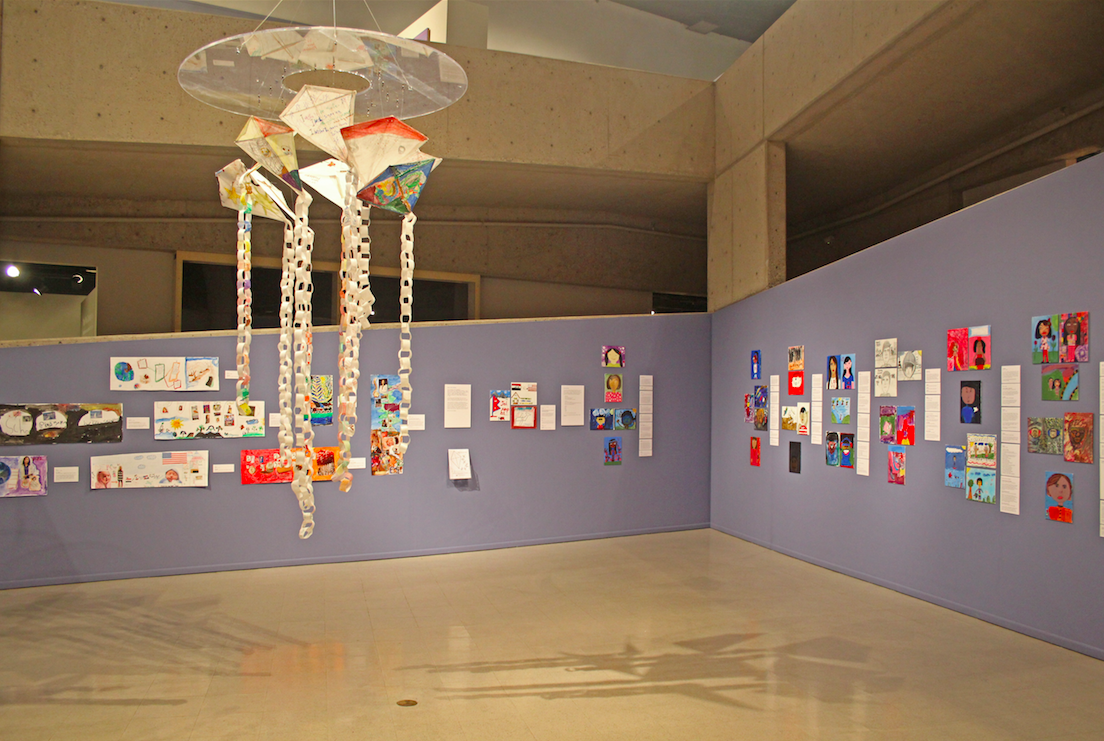By Marianna Pegno, Marge Pellegrino, and Morgan Wells
The Tucson Museum of Art (TMA) has partnered with the Hopi Foundation’s Owl & Panther Project for a program entitled Museum as Sanctuary (MAS). This program helps foster expressive arts healing through in-gallery and hands on art-making activities on Tuesday evenings throughout the academic school year. This is the fifth year that TMA has facilitated Museum as Sanctuary. Since starting this collaboration, the Museum has held two exhibitions of participants’ artwork, which include biographies, stories, and labels written in their own words. Additionally, participants have created alternative labels for selected works in the Museum’s temporary exhibitions and permanent collection.
Tucson has a large refugee population and this program has given the Museum a better understanding of how to work with this diverse population. Since 2010, when the partnership began, over 20,000 refugees have been resettled in Arizona. Given the current international refugee crisis this type of collaboration is becoming increasingly important in building stronger connections between recently resettled refugees and their new communities.

Museum as Sanctuary participant(s) exploring exhibitions at the Tucson Museum of Art. Photograph by Cindy Callahan (c) Owl & Panther and Cindy Callahan 2014-2015.
Marge's Reflection
Owl & Panther has provided expressive arts, nature and service experiences in Tucson to families impacted by torture, trauma and traumatic dislocation since 1995. As our population has become even more diverse, Tucson Museum of Art’s partnership has helped Owl & Panther meet two mission points: providing quality expressive arts experiences for the families we serve and sharing work the families create in order to foster a more welcoming community. We’ve also found that the ability the families have developed to work on cumulative projects at TMA has built a confidence that allows them to jump into new experiences with more ease. The museum staff has been caring and responsive to the specialized needs of the people we work with and has been a true partner in creating circumstances that feed resilience. This collaboration underlined the importance of providing initial training for Owl & Panther partners and nurturing open communication for the life of the project.

Self Portrait, by Noora as part of the Hopi Foundation’s Owl & Panther Project and the Tucson Museum of Art’s Museum as Sanctuary: Perspectives of Resilience
Morgan’s Reflection
Working with refugees has taught me to be more sensitive when planning programs at TMA. When I first started working here, I was hired as the Manager of Youth and Family Programs and it was during this time that we first started the MAS Program. I had never worked with refugees before and did not fully understand what was needed to make this a successful program and partnership. I was asked to do a tour for the adult participants of the program, and as I began my tour that evening, it was immediately evident that most of them did not speak English or had very limited English language skills. I quickly had to improvise my delivery of the tour since a traditional tour of the galleries would not work. Subsequently, I have been through training on how to successfully work with refugees and have been able to apply these methods to many different types of programming. My advice to someone trying to facilitate a program similar to MAS would be to become very familiar with your audience so that you are able to create a worthwhile and rewarding experience for the participants.

Self Portrait, by Sahara as part of the Hopi Foundation’s Owl & Panther Project and the Tucson Museum of Art’s Museum as Sanctuary: Perspectives of Resilience
Marianna’s Reflection
The collaboration between the Tucson Museum of Art and Owl & Panther transforms the museum into a community-based institution. Together these institutions seek to establish dialogues that foster individuality and preserve cultural identity, while exploring new ways of collaborating within the Museum and the community at large. Over the course of five years I have seen participants become more critical about the exhibitions on view and thinking more creatively about how to generate descriptions of objects on view in the Museum’s galleries. I’ve watched individuals grow into confident, passionate, and well-spoken artists, who’ve shared their knowledge and experiences with new participants, community members, and Museum visitors. Perhaps more interestingly, in relation to my own professional practice, Museum as Sanctuary has challenged me to think about Museums in new ways and to experiment with innovative methods to bring multiple voices and community perspectives to the institution. This has informed how I develop in-gallery activities, art-making experiences, and propose interpretive elements for exhibitions. Perhaps one of the most important lessons I have learned is to be receptive and reciprocal, and that being a better museum educator means being a better listener.

Museum as Sanctuary: Perspectives of Resilience installation view, exhibition on view through January 3rd, 2015 at the Tucson Museum of Art. Photograph by Marianna Pegno.
Marianna Pegno is the Associate Curator of Education at the Tucson Museum of Art and is a doctoral candidate at the University of Arizona in Art History and Education. Her research explores connections between museum practice and postcolonial theory in order to position the museum as a multivocal institution
Teaching artist and author Marge Pellegrino has worked to create diverse experiences for Owl & Panther’s intergenerational participants since 1999.
Morgan Wells is the Curator of Education at the Tucson Museum of Art, a post she was appointed to in the summer of 2011. Previously she served as the Manager of Youth and Family Programs at the Tucson Museum of Art. Since Morgan has held the position of Curator of Education, she has made a priority of making the Museum a destination for families in Tucson.







